Ok, so I may have sent a panicked message in the early hours of the morning as our catamaran rocked, bucked & crashed through the ocean to Española! A trifle dramatic and an over- reaction! I don't think it was really rough just more so than we expected. The captain apparently said it was smooth.
Outbreaks of bird flu have limited contact with the island to snorkelling, a beach landing and zodiac boat rides. They are extremely worried, but rely on the tourist dollar and international visiting scientific community.
Waking (or rather giving up in sleep) I just caught the sunrise. After a typical equadorean breakfast fruit, eggs and arepas we boarded the zodiacs for gardener bay beach; not as wet a landing as expected thankfully. We joined a sea lion colony as the morning mist evaporated. Truely amazing to be the only group on this deserted (apart from plenty of sea lions, mocking birds, frigates, masked boobys... etc) desert island! Only the mad English braved a swim until the alpha male sea lion told us to take a hike rather loudly! The shoreline revealed many treats, besides the sea lions; bones, turtle nests, mocking bird wars and plain old paddling! The seal lions had us all in stiches, so ungainly on land yet so graceful in the water. One was rather curious around me!
Wetsuit fitting, snorkelling lesson and beginners introduction followed. I know it's mandatory to explain everything but I was scared silly by the time we reached the edge of the rocky bank! Couragesly I followed Simon, immediately we saw pretty black fish with a yellow stripe, which actually were blue king angel fish, trumpet fish, shoals of sardines lots of plancton and just at the end sea lions and pups frolicking! I saw a pelican diving for fish by the zodiac. Tough de-flippering ready to scramble aboard with rubber fingers. Hot chocolate and the hot tub really helped! Whilst frigate birds swooped around us enjoying the thermals.
Yet more food. Cervice (Ecuadorean style reportedly lovely) and some palm hearts with vegan lupin cheese for me, so kind to take the trouble. Note for tomorrow less breakfast, ignore the snacks, don't eat the nuts. And a welcome chance to sit before snorkelling again in Punte Suárez bay.
Amazing! Who was watching whom. Being buzzed by curious sea lions and sea turtles was not what I expected. The cold seawater shower creating a warm layer to combat the cold, meant I lasted a fraction longer! Great trick. We snorkelled around the end of Suarez bay just in front of the dramatic surf. It was still full of plankton but clearer, we saw lots of different shoals of fish, little black fish, and both sea lions and sea turtles playing. Either there were quite a few sea lions and turtles or they took a fancy to me. On shore from the water in the distance I watched marine iguanas bask, pelicans, and more sea lions whilst just swimming. As well as frigate birds and masked boobies hovering on the thermals. I was the first to admit I was cold, thinking it was just me I realised everyone had had enough!
Returning I nipped up to the hot tub for a warm up before showering. Took me a while to figure the shower and I used their provisions assuming they would be suitably eco friendly enough. I just about made it back in time for the zodiac ride around the bay we'd just snorkelled in.
We managed to get close enough to see the iguanas, sally red foot crabs and the pelican.
Returning the captain agreed to shows us the next bay which has the famous nesting booby birds perched on the cliffs and blow holes; it felt like Cornwall! The nesting cliffs might possibly be like Skomer island? Standing on the top deck watching the sunset as frigates rode the thermals or hitched a ride on the satellite antenna!
Our briefing for tomorrow over, we had dinner, with desert sea sickness knockout pills. Simon accepting the drug was soon snoring, I declined. I hope I don't end up regretting it!
Gardner bay Beach Española
(Beach views; Google maps location mid panic; Google maps location)
Sea lions Gardner beach
Beach delights Gardner bay
(Sea lion skull, mocking bird, brain coral, whale skeleton, Treasure boat)
Snorkelling: Gardner bay
(King Angel fish, sea lions)
Afternoon snorkel at Suarez point.
(Swimming with sea turtles and sea lions, the sea weed the marine iguanas eat;shoals of fish)
Zodiac ride to the same place; the planned hike banned due to the island bird flu closure
(Christmas Marine iguanas (red & green) basking; a pelican on the beach; Simon near the lighthouse )
Observation deck just before briefing and dinner.
(Frigate birds; sunset; the cliffs with the rare boobies; our boats route B)
Video to follow if technology back home allows.
So today I discovered we saw some of the 69k Californian sea lions, mostly females with babies and 1 alpha male. They typically are about 6- 600lb, even infants if 3-4minths are full size! They live for about 23-25 years, mostly eating and sleeping! Even better than a dog's life!
They eat any fish in the sea!
Snuggling up to each other for warmth, and rolling in the sand in lieu of a towel are common activities. Brown when dry, black when wet the babies play or rather train to gain the skills they will need. The alpha makes mates with 4-5 females, they have to mate often and fight for their leadership position. Never sleeping or eating often hurt and hungry they last about 2 weeks. The females ... indiferent! Males once mature at a year are left to their own devices, however females stay with the colony. Makes sometime join together in groups. Gestation is 9 months and new borns who suckle from their mothers maturing after a year.
Espanola is a 5-7 mill year old Island mostly low level volcanic rock. Marine iguanas are the only extant reptile living in water. They can live for 60 years, 10-12 is typical. They eat algae, the males dive, however the females eat from the plants in the shallows, however they will eat anything if hungry enough! Colonies range from 20-500 reptiles. The males defend their territory for upto 3months. Females reach sexual maturity after 3-5 years males 5-6 years, they breed last in the season on Espanola March, nesting afterwards in April. The females lay eggs in holes; her job done, after hatching a few months later the babies fend for themselves.
Relegated to the second zodiac, with water filled ears, I had to resort to google at times!
We stayed at Treasure of Galapagos catamaran boarded at San Cristóbal Ecuador




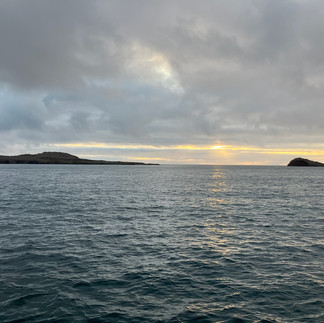











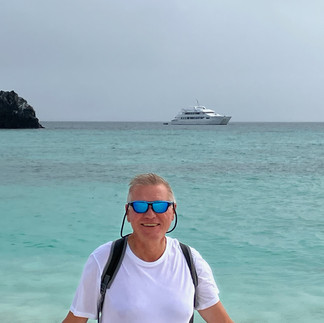























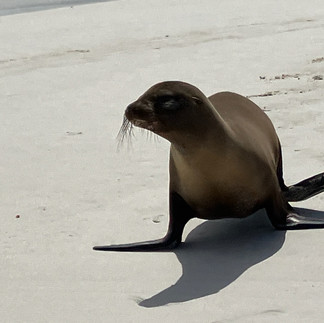

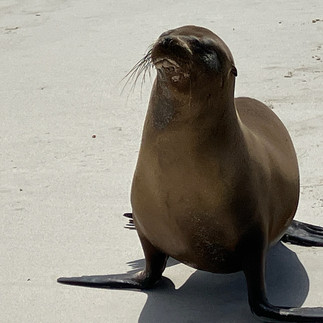







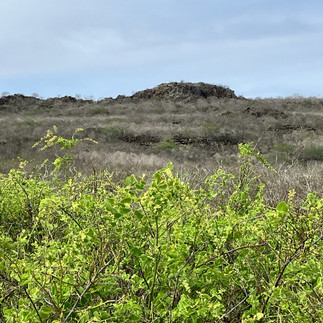

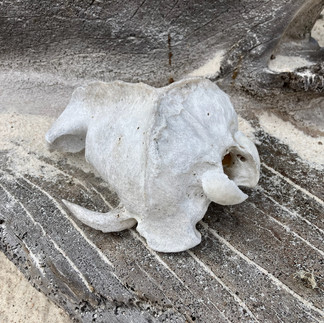

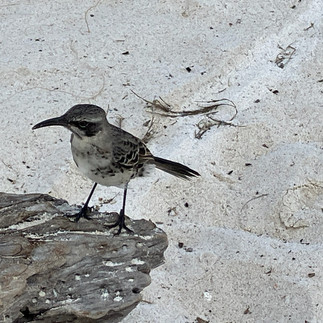







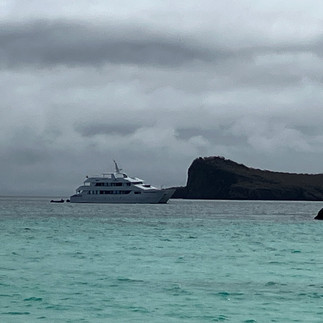



































































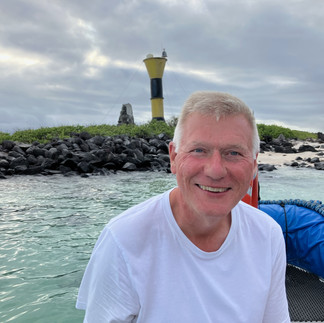

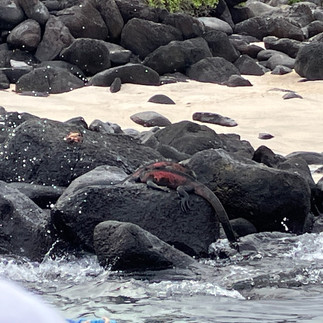







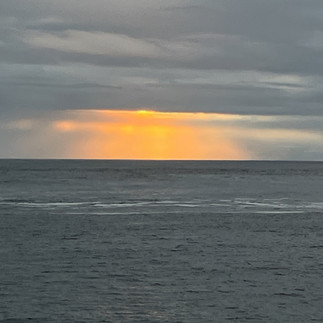

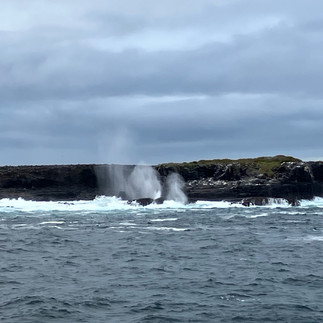

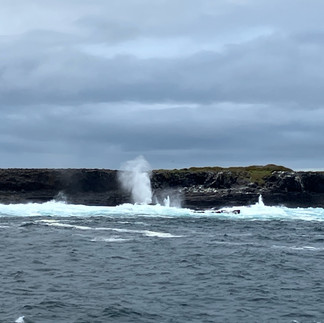




コメント